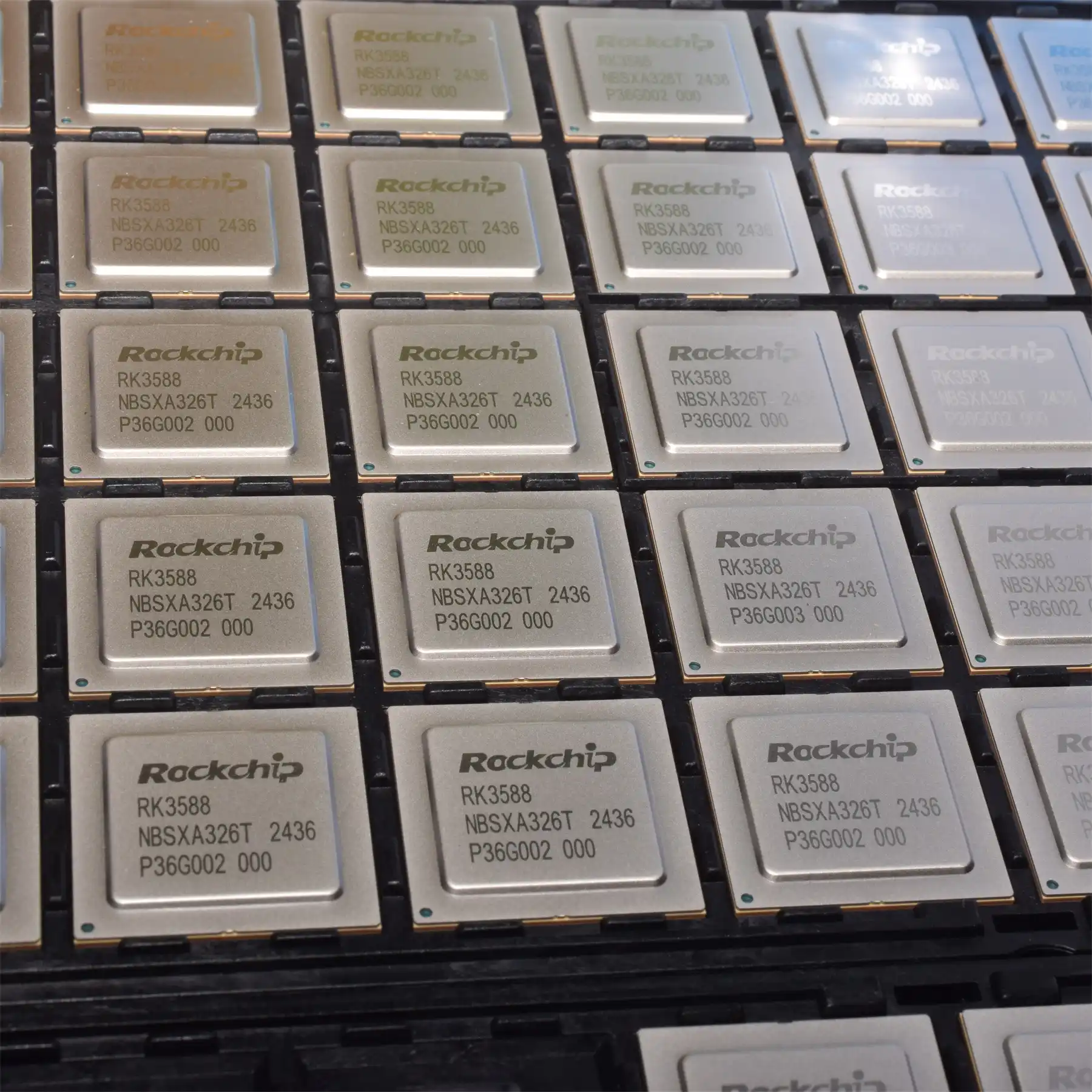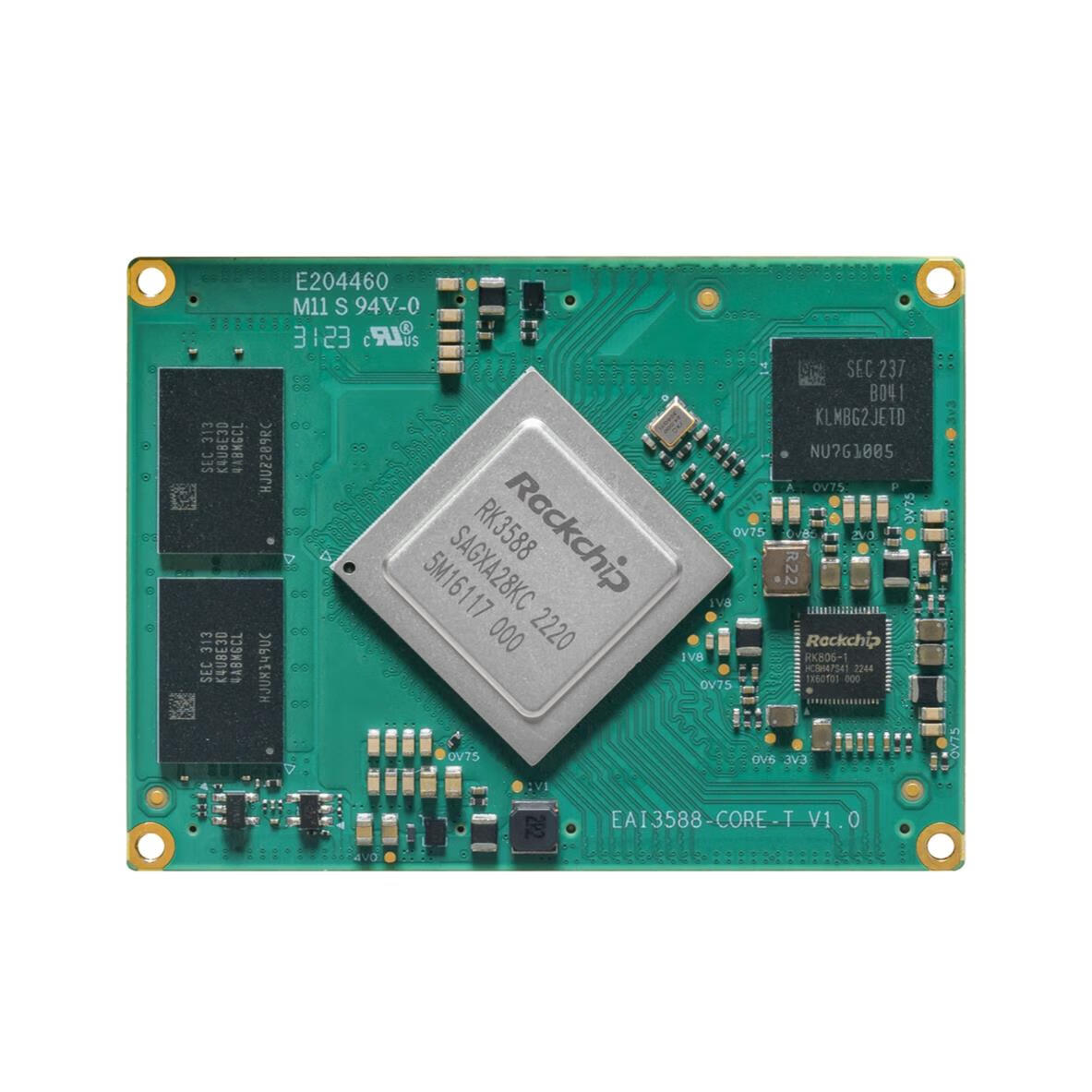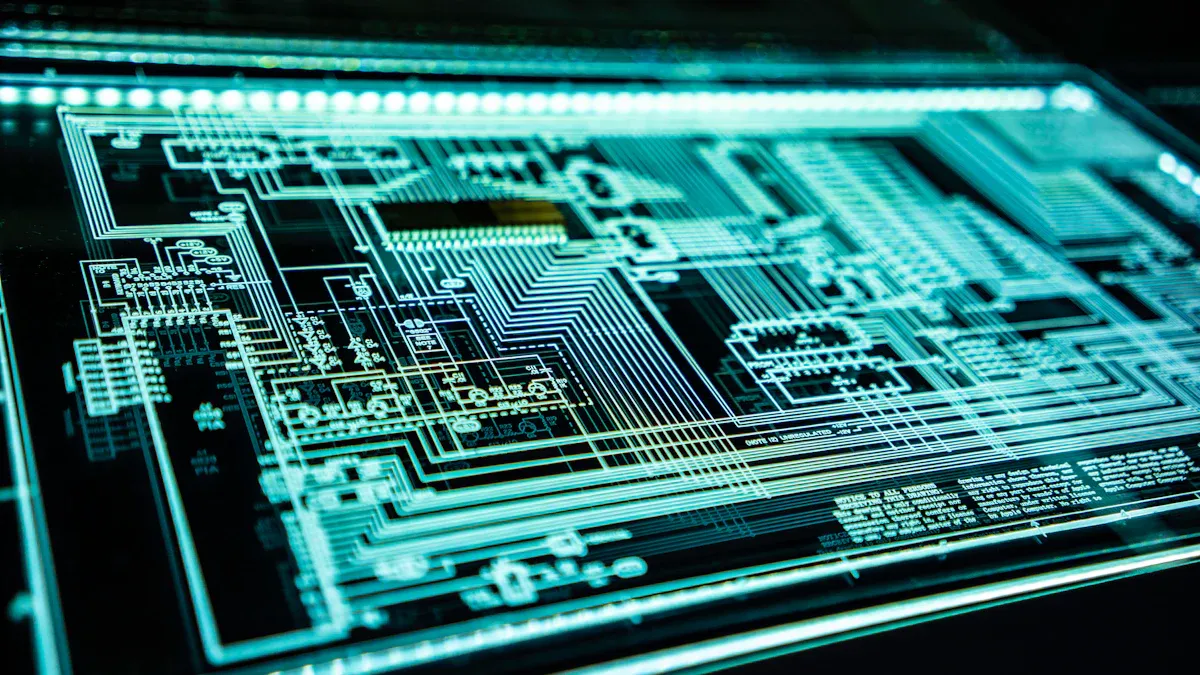Rockchip RK3588 High-performance system-on-chip technologies and their applications in edge computing and AIoT

High-performance system-on-chip (SoC) technologies combine parts like CPUs, GPUs, and AI tools into one small chip. These chips are crucial for edge computing and AIoT, processing data quickly at the source to minimize cloud communication. The market for AIoT Edge AI chips is experiencing significant growth, projected to rise from $5.2 billion in 2023 to $25.8 billion by 2032, with an impressive 18.5% yearly growth rate. New manufacturing methods, such as 16nm and 12nm nodes, enhance performance while reducing costs. Energy-saving techniques like Power Gating contribute to power efficiency. Innovations like the keepbooming supply Rockchip RK3588 chipset exemplify how these high-performance system-on-chip solutions enhance real-time data utilization, operational efficiency, and advancements in IoT.
Key Takeaways
High-performance system-on-chip (SoC) technologies put CPUs, GPUs, and AI tools on one chip. This makes devices work faster and use less energy.
SoCs process data quickly where it is created. This reduces delays and lowers the need to send data to the cloud, which is important for edge computing.
The demand for AIoT Edge AI chips is growing fast. By 2032, the market could be worth $25.8 billion, showing how popular smart devices are becoming.
New SoC designs use less energy and are made with better methods. These chips are smaller, work better, and can be used in many ways.
SoCs are important in fields like healthcare, cars, and smart cities. They help make quick decisions and improve how things work.
High-performance system-on-chip: Key Features and Benefits
Main parts of SoC: CPUs, GPUs, and AI accelerators
High-performance system-on-chip (SoC) combines CPUs, GPUs, and AI accelerators into one small chip. Each part has a special job to improve the chip's performance:
CPU (Central Processing Unit): Does general tasks and handles step-by-step processing. It works well for simple machine learning and memory-heavy tasks.
GPU (Graphics Processing Unit): Great at doing many tasks at once. It is used for training neural networks, creating images, and analyzing big data.
NPU (Neural Processing Unit): Built for AI tasks, it works like a brain to handle large data quickly and in real time.
Component | Strengths | Weaknesses |
|---|---|---|
CPU | Flexible, good for step-by-step tasks | Not great for multitasking |
GPU | Handles many tasks at once, good for AI | Struggles with complex decision-making |
NPU | Best for AI, fast for real-time tasks | N/A |
These parts work together to make the chip powerful and able to handle many tasks easily.
Benefits: Faster response, energy-saving, and small size
High-performance system-on-chip technologies have many benefits that make them important today:
Faster Response: These chips process data on the spot, cutting down delays and making devices respond quickly.
Energy-Saving: New manufacturing methods, like 16nm and 12nm nodes, use less power. This makes them perfect for IoT and edge devices.
Small Size: Putting all parts into one chip makes it smaller. This helps in making tiny gadgets like phones, tablets, and smartwatches.
The demand for these chips is growing fast. In 2023, the market was worth $172.673 billion. By 2032, it could grow to $253.84 billion because of the need for smart devices.
Helping with real-time actions and decisions
High-performance system-on-chip technologies let devices process data and decide instantly. For example, in cars, these chips help advanced systems like ADAS. They quickly check sensor data to warn about crashes or lane changes. In factories, SoCs help machines find flaws in products quickly and accurately.
With AI accelerators, these chips make edge computing better. They let devices do hard AI tasks without needing the cloud. This lowers delays and speeds up decisions. From smart cities to healthcare and gadgets, high-performance system-on-chip technologies bring new ideas and better results to many fields.
Edge Computing Applications of SoC Technologies

Making edge AI faster and more efficient
Edge computing uses system-on-chip (SoC) technologies to process data quickly. SoCs combine CPUs, GPUs, and NPUs to handle tasks locally. This reduces the need to send data to the cloud. Local processing speeds up decisions and improves how devices work. For example, factories use edge AI to predict equipment problems before they happen. It also helps find errors in manufacturing faster and more accurately.
Many industries now need edge AI solutions. Electric cars use thousands of chips to run smoothly. By 2028, IoT devices are expected to reach 35 billion connections. This shows the growing need for SoCs that save power and handle complex AI tasks.
Examples: Smart cities, self-driving cars, and factory systems
SoC technologies are changing smart cities, self-driving cars, and factory systems. In smart cities, SoCs help analyze video in real time. They can track people’s movement or spot unusual behavior. Self-driving cars use SoCs for safety features like crash warnings and lane alerts. These systems rely on sensors and SoCs to make quick decisions.
In factories, SoCs improve machines that check for product flaws. They can find mistakes in welding or small parts with high accuracy. SoCs also work with time-sensitive networking (TSN) to control robots better. This makes production faster and more precise.
Working with sensors and communication tools
SoCs connect with sensors and communication tools to improve edge computing. Advanced SoCs use Integrated Sensing, Communication, and Computation (ISCC) to work together smoothly. This setup saves energy, reduces delays, and boosts performance.
For example, in 5G edge computing, SoCs help transfer data quickly and respond fast. Partnerships with companies like Quectel Communications have created 5G+AI solutions. These help smart homes, healthcare, and factories process data in real time. By improving connection speed and efficiency, SoCs make edge computing more reliable and effective.
AIoT Chipsets and Their Applications

Managing AI tasks locally
AIoT chipsets are changing how AI tasks are handled. These special chips do hard computing jobs right where they are needed. This reduces the need to send data to the cloud. With AI accelerators, these chips make quick decisions and analyze data fast. For example, Nvidia’s Jetson TX2 and Google’s Edge TPU are made for edge AI tasks. They use less power and work quickly, making them great for things like self-driving cars and factory machines.
As AIoT grows, smaller and smarter models are being created. These models need chips that balance speed, memory, and energy use. AI on SoCs helps devices work well while using little energy. This makes them a good choice for edge computing.
Examples: Smart homes, healthcare, and factories
AIoT chipsets are making many areas smarter and better. In smart homes, companies like Xiaomi use AIoT to make helpful gadgets. These devices follow voice commands quickly and save energy. In healthcare, AIoT chipsets power tools that monitor patients and help doctors. This improves safety and care. In factories, AIoT helps with tasks like finding water leaks and controlling flow with smart meters.
These examples show how useful AIoT chipsets are in solving problems. With AI accelerators, these chips work well in homes, hospitals, and factories.
Advantages: Saving energy and fast data processing
AIoT chipsets have big benefits like saving energy and working fast. They use smart computing to save power and plan tasks better. For example, in factories, these chips work in tough conditions with high accuracy. In smart homes, they power sensors that stay on all the time but use little energy.
By handling data on the spot, AIoT chipsets give quick results. This is very important in healthcare, where fast answers can save lives. In cars, these chips process data quickly for safety systems. By combining energy-saving features with fast decisions, AIoT chipsets are improving many industries.
Challenges and Innovations in SoC Design
Finding the right balance: power, performance, and cost
Creating system-on-chip (SoC) designs means balancing power, performance, and cost. These three factors are key to making SoCs work well in different industries. For example, ASICs and FPGAs have their own strengths and weaknesses:
Factor | ASICs | FPGAs |
|---|---|---|
Performance | Faster because of custom design | Flexible but slightly slower |
Power Consumption | Uses less power | Needs more power due to programmability |
Cost | Cheaper for large production | Better for small projects |
ASICs are great for big projects needing speed and low energy use. FPGAs are better for smaller projects that need flexibility. Engineers must choose carefully to match the needs of each project while keeping costs low.
New ideas for saving energy and edge-cloud teamwork
Saving energy is very important in SoC design today. New ideas aim to use less power while keeping performance high. Edge computing helps by processing data close to where it’s made. This saves energy and reduces delays. Some key improvements include:
Low-power processors that make batteries last longer.
GPUs designed for machine learning that work faster and use less energy.
Smart power-saving methods also help a lot:
DVFS changes voltage and speed to save power.
Core sleep states turn off unused parts of the chip.
AI-based energy management adjusts power use based on tasks.
These ideas allow edge devices to handle quick tasks while sending harder jobs to the cloud. This teamwork saves energy and keeps performance high.
Keeping edge AI safe and private
Adding AI to SoCs brings new safety and privacy problems. AI systems can be attacked or hacked, leading to risks like stolen data or system failures. To fix this, strong safety steps are needed:
Security and Privacy Concerns | Description |
|---|---|
Vulnerabilities | AI adds more ways for attacks to happen. |
Risks | Problems include hacking and fake data. |
Security Measures | Tools like encryption and detection help. |
To protect AI systems, SoCs use advanced safety tools:
AI Compute Security Measures | Description |
|---|---|
Infrastructure Protection | Keeps AI systems safe inside devices. |
Resilience | Helps systems stay strong during attacks. |
Security Practices | Mixes regular safety with AI-specific tools. |
By solving these problems, SoCs make AI safer and more trustworthy. This helps edge AI grow in many areas.
Future Trends in Edge AI and SoC Technologies
Improvements in AI processing and multi-use platforms
Edge AI is getting better with new AI tools and multi-use platforms. These platforms handle different data types like pictures, words, and sounds. This helps devices do hard tasks right where they are. For example, self-driving cars use edge AI to check sensor data fast. This keeps them safe and running well. In healthcare, smart systems use AI to study patient data on-site. This cuts delays and makes care better.
The need for edge AI chips is growing quickly. By 2033, the market might reach $25.2 billion, with a yearly growth of 26.5%. This shows how industries like cars, robots, and smart factories want faster and energy-saving AI tools.
Application Type | Key Uses |
|---|---|
Automotive | AI helps with self-driving and driver safety systems. |
Robotics | Robots use AI for better choices and working alone. |
Smart Manufacturing | AI helps fix machines early and improve processes. |
Smart City | AI manages traffic and keeps people safe. |
Security & Surveillance | AI watches for dangers in real time. |
New chances with AIoT chipsets
AIoT chipsets are opening doors to new tech ideas. These chips mix AI smarts with IoT connections. They let devices handle data nearby while staying linked. The AIoT market could grow from $29.12 billion in 2024 to $151.27 billion by 2032, with a yearly growth of 22.87%. This rise comes from more need for IoT links, machine learning, and edge AI.
Big uses include smart homes, healthcare, and factory work. In smart homes, AIoT gadgets like voice helpers and energy-saving tools make life easier. In healthcare, AIoT chips help watch patients and give quick results. Factories use these chips to fix problems early and save resources.
Year | Market Size (USD Billion) | Growth (%) |
|---|---|---|
2023 | 23.7 | N/A |
2024 | 29.12 | N/A |
2032 | 151.27 | 22.87 |
Safer and greener SoC designs for edge computing
New SoC designs focus on safety and being eco-friendly. Modern SoCs use encrypted data and block side-channel attacks. This keeps machine-learning tasks safe in phones and factory systems.
Digital processors now use hardware virtualization to boost safety. This splits tasks by trust levels, lowering risks and stopping harmful attacks.
Being eco-friendly is also important. SoC designs now check how much carbon is made during chip production. Energy-saving processors and AI power tools help lower harm to the planet. These changes make edge computing safer and better for the environment.
High-performance system-on-chip (SoC) technologies are changing edge computing and AIoT. They combine AI tools, IoT connections, and edge features into small chips. This makes smart devices work better and helps industries like homes, factories, and cities.
Edge AI and edge computing save money, scale easily, protect data, and work reliably. They process data locally, cutting cloud use and boosting speed.
Using these technologies opens doors for fixing machines early, managing traffic, and saving energy. Their power pushes industries to use them for smarter and greener growth.
What is a system-on-chip (SoC)?
A system-on-chip (SoC) combines parts like CPUs, GPUs, and AI tools into one chip. It can handle tasks like data processing, running AI programs, and managing communication. This makes devices work faster, smaller, and more efficiently.
How do SoCs improve edge computing?
SoCs process data right where it is created. This reduces the need to send data to the cloud. It lowers delays, helps make quick decisions, and saves energy. Their small size makes them perfect for devices like smart cameras and factory sensors.
What industries benefit most from SoC technologies?
Industries like cars, healthcare, smart cities, and factories gain a lot. For example, SoCs help self-driving cars, track patients in real time, and improve factory machines by finding problems and working better.
Why are AI accelerators important in SoCs?
AI accelerators do hard AI jobs like recognizing images or understanding speech. They work fast and use little power. This helps devices do smart tasks quickly and right where they are.
What role do SoCs play in AIoT?
SoCs help AIoT devices process data and decide things locally. This improves smart home gadgets, health tools, and factory machines. They provide quick results, save energy, and connect easily with IoT systems.
See Also
Enhancing Robotics With RV1126's AI Edge Computing Power
Elevating Automotive Efficiency Using NXP Microcontrollers MC9S12 Series
Three Innovative Approaches of ATIC83E2 in Industrial Automation
Integrating AEAT-8800-Q24 To Improve Robotics Performance Effectively
Unveiling Key Specifications of MC9S12XEQ512CAL Microcontroller
CALL US DIRECTLY
(+86)755-82724686
RM2508,BlockA,JiaheHuaqiangBuilding,ShenNanMiddleRd,Futian District,Shenzhen,518031,CN
www.keepboomingtech.com sales@keepboomingtech.com
